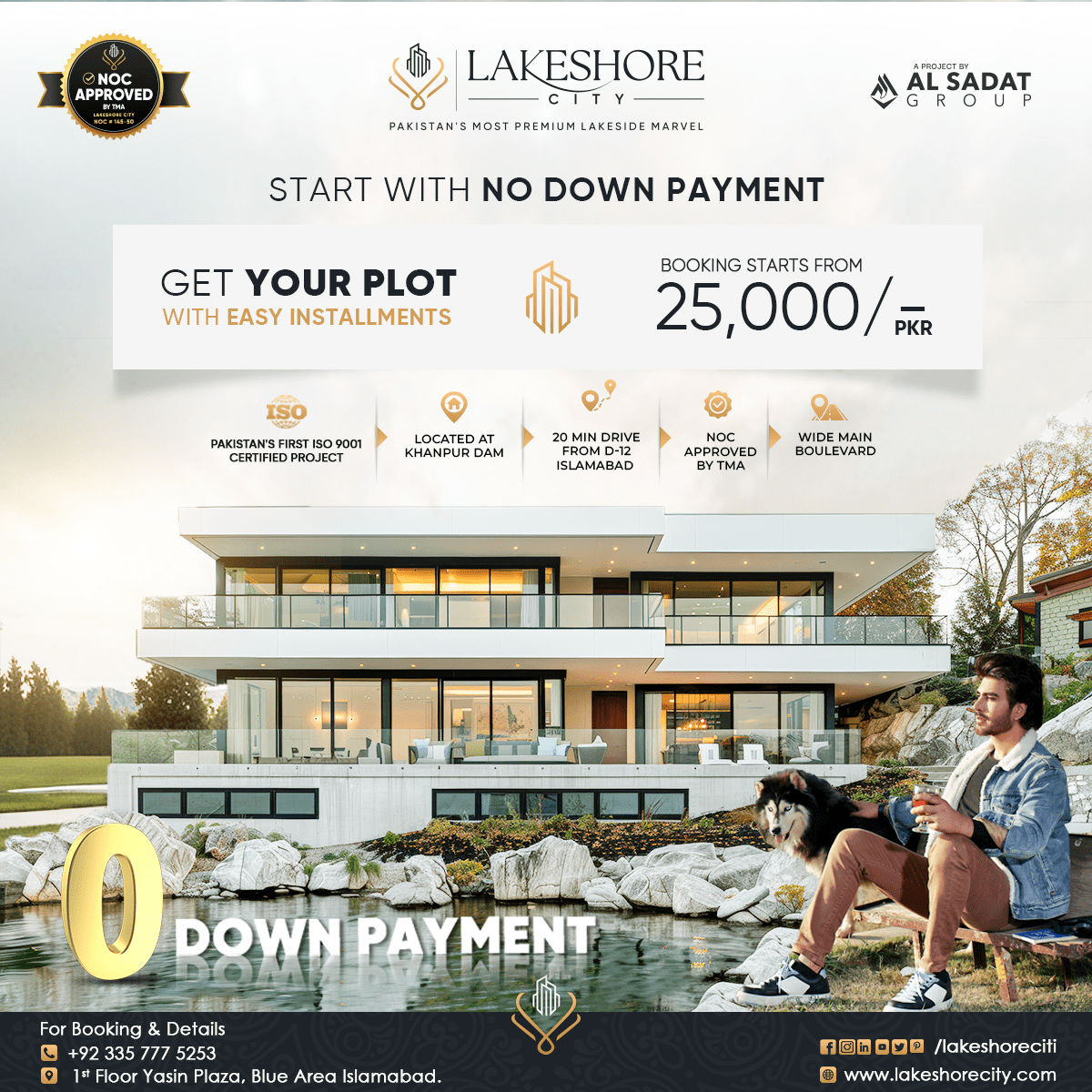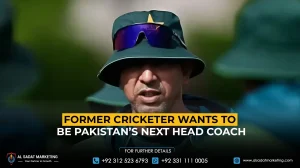The History and Specifications of Pakistani Currency
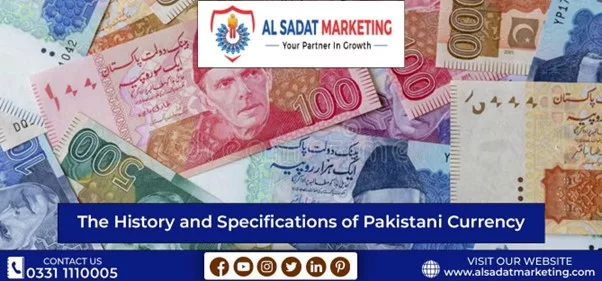
As Pakistanis, we hardly ever pay attention to the many images on the bills we frequently use. Many of us are unaware of the numerous careful and ongoing efforts that have gone into creating our currency notes and the manner they are printed. Even the coins we use have undergone numerous modifications. We’ll talk about the evolution of Pakistani currency and its depreciation relative to the US dollar from 1947 to the present. We’ll also discuss what is written on the reverse of current coinage and currency.
History of Pakistani Currency Notes
The Reserve Bank of India’s Indian currency was in circulation when Pakistan gained its independence in 1947. Pakistan had only recently gained independence, thus it was impossible to set up a central banking system straight soon. As a result, arrangements were made for Pakistan to receive money from the Reserve Bank of India after it was founded.
After 1947
The first currency was the Indian Rupee, which had the words “Government of Pakistan” printed in both English and Urdu on the white portion of the note designated for watermarks. A clause enabling the issuance of currency to the newly independent country was agreed by the Governor General of India one day before independence.
Until September 30, 1948, the Reserve Bank of India would be the only institution authorized to issue currency to both India and Pakistan. The Pakistani government was allowed a year to set up its banking infrastructure and printing press.
The printing plates were upgraded to add the ‘Government of Pakistan’ tags on the notes in order to stop counterfeiting caused by overprints. The notes, which were in denominations of 1, 2, 5, 10, and 100 Rupees, went into circulation on April 1st, 1948.
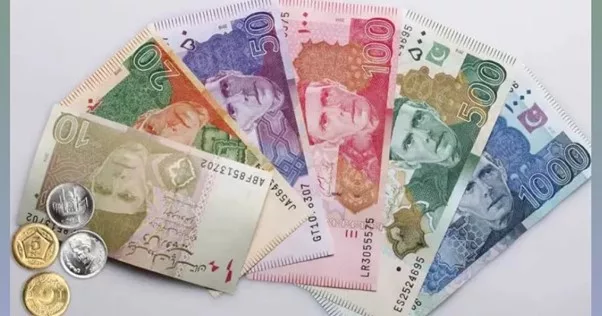
After The Establishment of State Bank of Pakistan
The State Bank of Pakistan originally released banknotes in the amounts of 5, 10, and 100 rupees on October 1st, 1948. The banknotes were produced by a British company named Thomas De La Rue & Company. At that time, the 100-Rupee note was dark green, the 10-Rupee was reddish-orange, and the 5 Rupee note was blue.
The 1 and 2-Rupee notes went on sale on March 1, 1949, which was six months later. These were printed by the British business Bradbury Wilkinson & Company. The Naulakha Pavilion was depicted on the back of the 1-Rupee note, and the Badshahi Mosque was shown on the back of the 2-Rupee note.
The State Bank of Pakistan then issued the 5, 10, and 100-Rupee notes in September 1959, printed by Thomas De La Rue, after new designs for the notes were submitted for approval. The Khyber Pass was depicted on the back of the 5-Rupee note, while the Makli Tombs were shown on the back of the 10-Rupee note.
The first 100-Rupee note was printed about two years after the initial design was rejected. On these early notes, Pakistan was denoted by a crescent moon and star, either in print or as a watermark.
However, a second series with Muhammad Ali Jinnah’s image was made once word of the forgery reached the Cabinet in 1956. A green note featuring a print and watermark of Muhammad Ali Jinnah on the front and the Badshahi Mosque on the back was the first in this series and was released near the end of 1957. Before the year ended in 1970, the 5, 10, 50, and 500 Rupee notes were also released.
After East Pakistan Got Separated
A new generation of Pakistani notes was created to be distributed as certain images on the old notes, such as Bengali text, were no longer appropriate following the division of East Pakistan. The 1-Rupee note, which was released in May 1974, was the first of this series. It had text in all four major regional languages and was blue in color. The Minar-e-Pakistan was depicted on the back. Due to the use of regional languages, which would have caused a rift among the populace, this note was only briefly made.
A new one rupee note went into circulation in April 1975, and the next year, five, ten, and one hundred rupee notes were also released. The 50-Rupee note, which was in circulation near the end of 1977, was the next item on the list. While the 500-Rupee note was released in April 1986, the 2-Rupee note went into circulation in August 1985. In July 1988, the 1000-Rupee note was created and put into circulation. For a sizable amount of time, these notes served as the nation’s primary form of payment.
However, it was decided to rebuild the notes with modern characteristics as more advanced methods for protecting the currency became available. In August 2005, the first 20-Rupee note was printed and circulated. Originally, it was brown in color and had a picture of Mohenjo-Daro on the back. With the exception of the 1 and 2 Rupee notes, which were replaced by coins, other notes in the series also underwent redesigning. Later in 2012, the 5-Rupee note was likewise eliminated.
The highest note currently in use is the 5000-Rupee note, which first appeared in May 2006 and has a mustard color. This denomination was first established in Pakistani money at that time.
History of Pakistani Coins
Pakistani currency in the past comprised coins in a range of denominations. One Pakistani Rupee up to 1960 contained 16 ana, each of which was worth 4 paisa, for a total of 64 paisa in each Rupee. The coins in use were 1 paisa, 2 paisa, 1 ana, 2 ana, 4 ana, 8 ana, and 1 rupee.
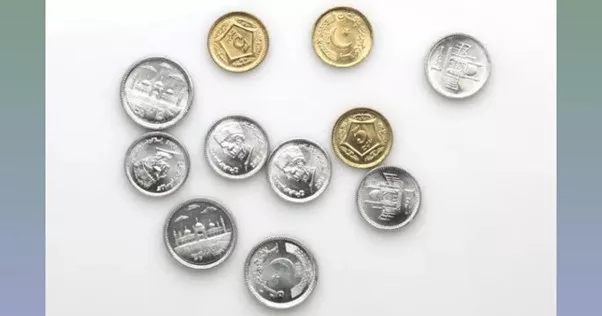
After 1960, Pakistan converted its currency to the metric system, and each Pakistani Rupee comprised 100 paisa. The coins used at the period were 1 paisa, 2 paisa, 5 paisa, 10 paisa, 25 paisa, and 50 paisa. Most of these were still in use up until the 1990s, when they started to disappear.
Although the metal used to create them has changed, the 1- and 2-Rupee coins, which were introduced around the same time, are still in circulation today. A 5-Rupee coin was released after the note was phased out. A 10-Rupee coin is also in existence, but it is hardly used.
State Bank of Pakistan Unveiled RS.75 Note on 75th Independence Day
The State Bank of Pakistan (SBP) unveiled the new PKR 75 notes in an effort to commemorate Pakistan’s 75th anniversary of independence. Today, on September 30, 2022, the public issuances of the PKR 75 note began, according to the central bank’s Twitter account.
The color of the currency note is mostly emerald green, with light green, white, and grey appearing in select areas. The images of Sir Syed Ahmad Khan, Mohtarma Fatima Jinnah, Quaid-e-Azam Muhammad Ali Jinnah, and Allama Muhammad Iqbal are on the front side of the note (from left to right).

The image of Markhor on the note’s reverse highlights the significance of environmental preservation. The commemorative currency note, which was unveiled on August 14, 2022, is currently circulating online and drawing varied reviews from internet users.
Facts About Pakistan’s Currency
Pakistan’s currency has a colorful history. There are five interesting facts about Pakistan’s history:
- The word “rupee” comes from Sanskrit which means “coin of silver”.
- The first coin with the name “rupee” was introduced by Sher Shah Suri in the 1500s.
- First Pakistani currency was issued by the Reserve Bank of India after the partition.
- Early versions of Pakistani currency had both Urdu and Bengali text.
- State Bank of Pakistan published special “Hajj” notes until 1978 to simplify the currency exchange.

Conclusion
As new technologies emerge, banknote design and security features are developing. Developed nations alter their banknote series based on a variety of variables, including new security technologies, new substrates, threats from counterfeiting, concerns unique to certain countries, etc.
In one of its oldest structures in Karachi, close to its head office, the State Bank of Pakistan has established the nation’s first currency museum for anyone who is interested in learning more about the history of Pakistani money. The museum is located on I.I Chundrigar Road and contains a wealth of financial history. Old coins and banknotes are also on show.
You can also invest in other famous and most in demand housing societies, such as , Blue World City, Rudn Enclave, 7 Wonders City Peshawar, Taj Residencia, Kingdom Valley, New Metro City Gujar Khan, Forest Town Rawalpindi, University Town Rawalpindi, ICHS Town, Park View City Islamabad, Multi Gardens B17 Islamabad and Nova City Islamabad.
Al Sadat Marketing please contact 0331 1110005 or visit https://alsadatmarketing.com/
Few more real estate housing schemes which are trending now a days in Islamabad by including: Faisal Town Phase 2, Prism Town Gujar Khan, New City Paradise, Eighteen Islamabad, 7 Wonders City Islamabad, Capital Smart City, Silver City Islamabad, The Life Residencia, Faisal Town Islamabad, Islamabad Golf City, Islamabad Model Town and Marble Arch Enclave.
Al Sadat Marketing is an emerging Real Estate Agency headquartered in Islamabad, Pakistan. With over 10+ Years of experience, Al Sadat Marketing is providing its services and dealing all trending housing societies projects in different cities of Pakistan. Islamabad Projects, Rawalpindi Projects, Gujar Khan Projects, Burhan Projects, and Peshawar Projects etc.
Book Your Plot Now: +92 331 111 0005


